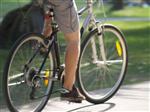 Want to understand how the human body captures, stores and uses energy?
Want to understand how the human body captures, stores and uses energy?
This applied biology course has very practical application for not only sportsmen and women, coaches and fitness leaders; but anyone who is concerned about managing and improving the work output of a human body.
Prerequisites: A basic understanding of body systems (e.g. Human Biology IA).